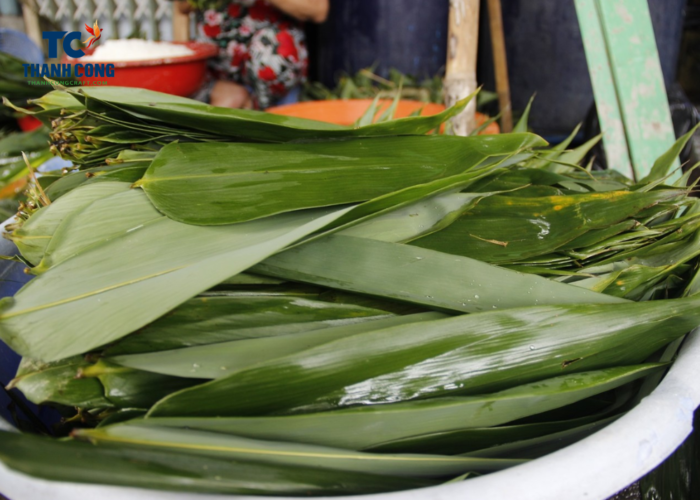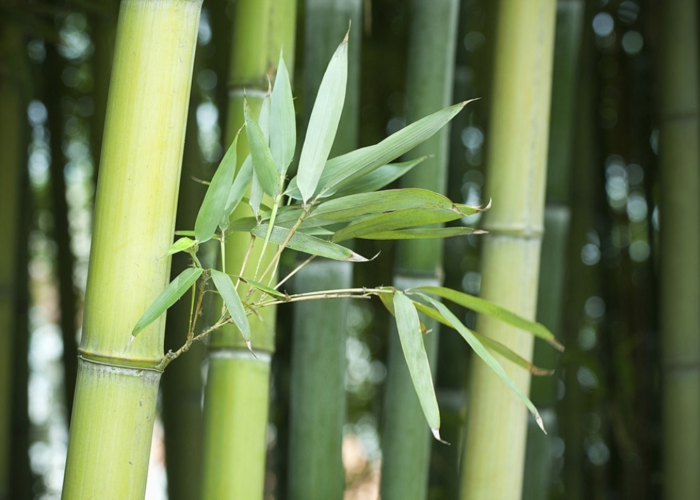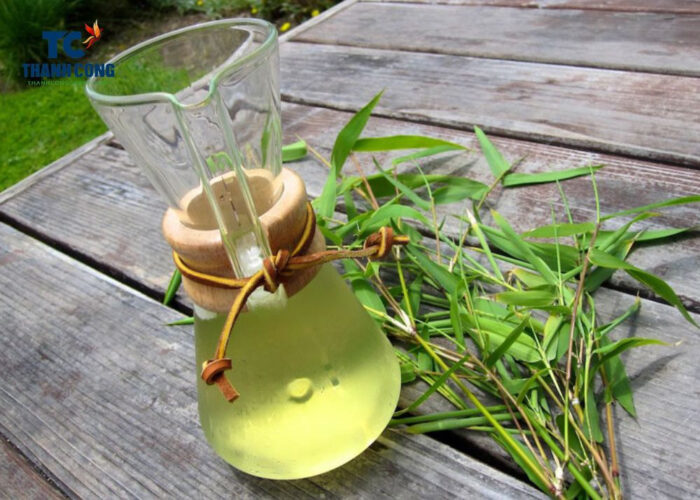Bamboo is a widely recognized plant, cherished not only for its contribution to crafting decorative items and kitchen products but also for its notable healing potential. Without any delay, let’s embark on an exploration of the diverse Bamboo Medicinal Uses in the article below.
Contents [hide]
- 1. Anti-inflammatory Properties of Bamboo
- 2. Anthelmintic Purposes of Bamboo
- 3. Bamboo has the ability to dry wound
- 4. Antimicrobial Properties
- 5. Bamboo leaves medicinal uses
- 7. Anti-Spastic Effects
- 8. Laxative Properties
- 9. Libido-Stimulating Attributes
- 10. Treating Throat Inflammation
- 11. Diabetes-Controlling Qualities
- 12. Healing Skin Rashes
- 13. Balancing Cholesterol Levels
- 14. Bamboo’s Antioxidant Power
- 15. Aids Digestion
1. Anti-inflammatory Properties of Bamboo
The leaves of the bamboo plant contain bioactive compounds that exhibit anti-inflammatory characteristics. These compounds work by modulating the body’s immune response, potentially reducing inflammation and related discomfort. This makes bamboo an intriguing candidate for natural anti-inflammatory remedies.

2. Anthelmintic Purposes of Bamboo
Beyond its practical and aesthetic uses, bamboo demonstrates remarkable potential in expelling parasites from the body. Bamboo leaves are known to possess active components that can hinder the growth and proliferation of various harmful parasites. Incorporating bamboo leaves into traditional remedies may contribute to natural parasite management strategies.
3. Bamboo has the ability to dry wound
Medicinal use of bamboo, the leaves of the bamboo plant contain bioactive compounds that exhibit astringent properties. This means that when applied to wounds, bamboo leaves can aid in the process of drying them out. This can be particularly advantageous in preventing infections and supporting the natural healing process of the body.
Read more: 20 Uses Of Bamboo That You Didn’t Know
4. Antimicrobial Properties
Bamboo encompasses an array of healing properties that extend beyond its physical applications. From traditional medicine to modern research, bamboo’s therapeutic potential continues to garner attention. Its leaves, in particular, showcase a remarkable range of benefits that contribute to overall health and vitality.
5. Bamboo leaves medicinal uses
Bamboo leaves hold a prominent place in traditional medicinal practices, addressing various health concerns. From fever reduction to respiratory issues, their diverse applications are deeply rooted in cultural and historical contexts. The upcoming detailed section delves into the multifaceted healing potential of bamboo leaves.

5.1. Anti-Coagulant Effects
Certain compounds found in bamboo leaves exhibit anti-coagulant properties, aiding in preventing excessive blood clotting. These effects contribute to improved blood flow and reduced risks of clot-related conditions.
5.2. Treating Nasal Congestion
Bamboo leaves have been utilized to address nasal congestion, owing to their natural decongestant properties. Preparations derived from bamboo leaves can offer relief and support clearer breathing.
5.3. Addressing Cough
Bamboo leaves possess qualities that can ease cough symptoms. They are often integrated into remedies designed to alleviate throat irritation and promote respiratory comfort.
5.4. Cooling Properties
The cooling nature of bamboo leaves makes them valuable in addressing conditions associated with excess heat in the body. Their application can help regulate body temperature and provide relief from heat-related discomfort.
5.5. Anti-Cancer Potential
Emerging research suggests that bamboo leaves contain compounds with potential anti-cancer properties. These compounds may contribute to inhibiting the growth of cancer cells, offering a promising avenue for further investigation.

5.6. Leprosy Fighting Characteristics
Traditional uses of bamboo leaves include their application in treating leprosy. Compounds within the leaves are believed to have therapeutic effects in managing this condition.
5.7. Antibacterial Traits
Bamboo leaves exhibit antibacterial properties due to specific bioactive compounds. These properties can contribute to natural infection prevention and management.
5.8. Stimulating Effects
Certain compounds found in bamboo leaves have stimulating effects on the body. These effects can help enhance focus, alertness, and overall energy levels. For a comprehensive exploration of bamboo leaves’ healing benefits, proceed to the detailed section below:
7. Anti-Spastic Effects
Bamboo’s therapeutic potential extends to its ability to counteract muscle spasms. The bioactive compounds found in bamboo leaves possess properties that help relax muscles, offering relief from spasms and promoting muscular comfort.
8. Laxative Properties
Incorporating bamboo leaves into remedies can aid in promoting healthy bowel movements. The leaves’ natural laxative properties can assist in relieving constipation and supporting digestive regularity.
9. Libido-Stimulating Attributes
Bamboo leaves have been traditionally associated with stimulating libido and enhancing sexual vitality. Their potential in this aspect contributes to a holistic understanding of bamboo’s impact on overall well-being.
10. Treating Throat Inflammation
Bamboo leaves exhibit soothing and anti-inflammatory qualities that extend to the throat. Preparations derived from bamboo leaves can be used to alleviate throat discomfort and reduce inflammation.
11. Diabetes-Controlling Qualities
Emerging research suggests that bamboo leaves may contribute to diabetes management. Compounds within the leaves show promise in helping regulate blood sugar levels, offering a potential complementary approach for diabetes control.
12. Healing Skin Rashes
For skin ailments like rashes, bamboo leaves’ soothing and healing properties come into play. Their application can aid in calming skin irritations, promoting recovery, and alleviating discomfort.
13. Balancing Cholesterol Levels
Research suggests that certain bioactive components present in bamboo leaves, such as flavonoids and phytosterols, play a role in lowering cholesterol levels. Flavonoids have antioxidative properties that help prevent the oxidation of LDL cholesterol particles, which is a crucial step in the development of arterial plaque. Phytosterols, on the other hand, compete with cholesterol absorption in the gut, leading to decreased cholesterol levels in the bloodstream.
14. Bamboo’s Antioxidant Power
An intriguing attribute of bamboo leaves lies in their abundant content of water-soluble polysaccharides, which exert inhibitory and suppressive effects on bacteria like E.Coli, S.Aureus, and B.Subtilis that may trigger illnesses within the body. To unleash this potential, it’s advisable to maintain the polysaccharide concentration below 50 mg/ml. A wealth of test outcomes underscores the natural antioxidative and antibacterial prowess of these water-soluble polysaccharides.
15. Aids Digestion
These bioactive components have a softening effect on stool by facilitating the reverse absorption of water into the colon after chloride secretion into the intestine. Additionally, bamboo leaf extract enhances intestinal motility, aiding individuals with constipation to expel waste more easily.
Beyond its medicinal attributes, bamboo presents a wide array of other advantages, exemplified by its versatility in crafting products such as Bamboo Planter Baskets, Bamboo Cups Wholesale, wholesale bamboo basket…
Above is Bamboo Medicinal Uses, If you have any further questions, please don’t hesitate to contact Thanh Cong Craft email at info@thanhcongcraft.com or message us at WhatsApp: +84967485411. Hope to serve you soon! Best regard!


